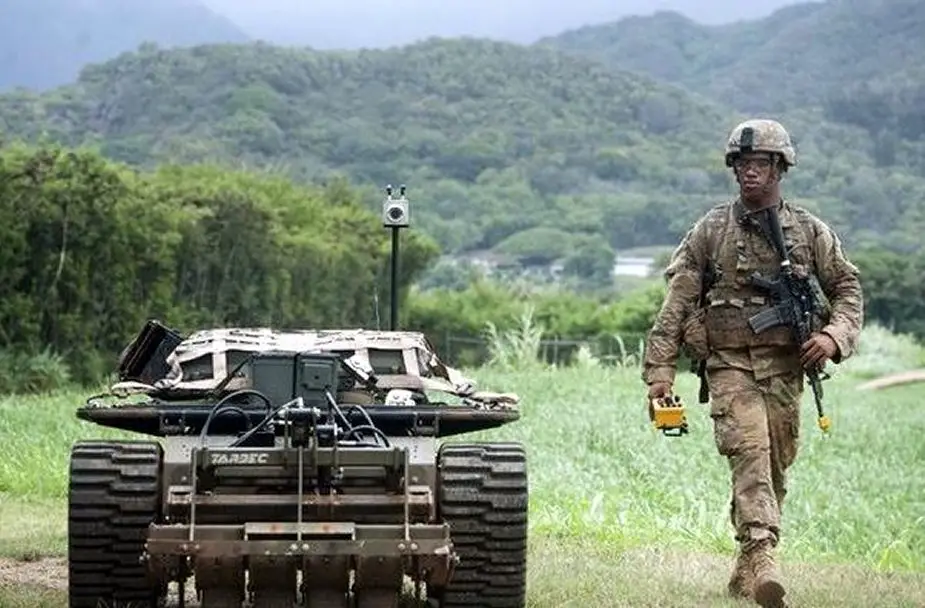Army Futures leveraging mission command for effective soldier, robot teams
U.S. Army Futures Command is developing new mission command concepts that will enable soldiers and robots to operate as effective teams in the future. Daniel Lafontaine, CCDC, explains on U.S. Army’s website.

Army Futures Command is developing new mission command concepts that will enable soldiers and robots to operate as effective teams in the future (Picture source: USAF/Staff Sgt. Christopher Hubenthal)
Mission command is the Army's philosophy of command and a warfighting function that promotes freedom and speed of action. It combines the centralized intent from the commander with the decentralized execution of subordinate commanders, who then decide how best to achieve the commander's objectives. In executing mission command, commanders must have a broad perspective, understanding and knowledge of activities throughout the operational area. Commanders, while clearly relaying their intent, must also trust their teams to execute. Similarly, trust and understanding of commander's intent must be relayed from the bottom to the top to ensure success in complex operational environments.
The Combat Capabilities Development Command, or CCDC, a major subordinate command within Army Futures Command, is exploring the extent to which robotics can be complementary to commanders and their staff during this decision-making process. "It's paramount that commanders and their staff be able to make the best possible decision at the right time, given their circumstances and the information that is available to them," said Osie David, a chief engineer within CCDC's Command, Control, Communications, Computers, Cyber, Intelligence, Surveillance and Reconnaissance -- or C5ISR -- Center.
CCDC's C5ISR Center is examining how best to maximize the capabilities of robotics through autonomy. This necessitates unobtrusively integrating robotic systems into the intent, trust and understanding cycle so that Soldiers do not have to spend a majority of their focus on operating robotic assets.
The Command of Robotic Systems program, or CoRS, is executed by the C5ISR Center's Command, Power and Integration Directorate, or CP&ID. With CoRS, the directorate is integrating emerging artificial intelligence and machine learning technologies with mission command capabilities to improve Soldiers' decision-making during the planning, preparation and execution of their missions.
"CoRS will let soldiers do what soldiers do best by maximizing and prioritizing human tasks involving complex cognitive decisions versus robotic tasks for missions like reconnaissance over large areas where manned systems may not easily reach. As a result, decisions are made faster and more efficiently by the soldier, and robots become helpers instead of a ball and chain," said Rob Beckinger, a CP&ID computer scientist, who noted that the key will be the proper management, filtering and dissemination of data collected by the robots.
CoRS will be an important component of the Army's Next-Generation Combat Vehicle project, which is looking to produce an Optionally Manned Fighting Vehicle as a Bradley Fighting Vehicle replacement.
These vehicles will be equipped with intelligence, surveillance and reconnaissance sensors; remote weapons stations; teleoperation or autonomous driving capabilities; unnamed aerial systems; and potentially smaller unmanned ground vehicles. CoRS will enable the efficient control of multiple robotic assets, while providing their data in a manner that does not overwhelm the soldier who is operating them. "We're focused on presenting information -- communications coverage, terrain data, enemy locations and critical alerts -- that soldiers would need to tele-operate a robotic system," said Katharine Toth, a C5ISR Center computer scientist.
CoRS is also aligned with another Army S&T project, Smart Targeting Environment for Lower Level Assets, or STELLA, which is in the initial research stage. STELLA will enable small units to operationalize robotics to continuously build and share the enemy operating picture, speeding up the Soldier's decision and targeting processes.
Equally important, CPI&D is addressing the doctrinal challenges involved with the interaction of soldiers and robots during the exercise of mission command. With CoRS and other similar robotics efforts, the Army aims to have humans in control and making decisions on the battlefield. The CoRS development team is working closely the Army doctrine's community at the Maneuver Center of Excellence and Mission Command Center of Excellence to ensure that the shifting technological landscape is taken into account going forward.
The C5ISR Center conducted a soldier touchpoint with two Fort Benning noncommissioned officers with significant experience in reconnaissance-based scout missions. The researchers designed interactive planning exercises through four operational recon scenarios that could benefit from teaming with robotic systems. Lessons learned are being shared with the broader Army robotics community to inform the development and fielding of tactical robotic assets.
"The soldiers came in understanding their mission from a scout perspective as they do it today, so we were able to get an understanding of what the most important work would be in pursuing mission command and what are the most important capabilities to develop. S&T needs to have a connection to the soldier. It ensures that the work is focused on their most essential needs," David said.
----------
The C5ISR Center is the Army's applied research and advanced technology development center for C5ISR capabilities. As the Army's primary integrator of C5ISR technologies and systems, the center develops and matures capabilities that support all six Army modernization priorities, enabling information dominance and tactical overmatch for the joint warfighter.
The C5ISR Center is an element of the U.S. Army Combat Capabilities Development Command. Through collaboration across the command's core technical competencies, CCDC leads in the discovery, development and delivery of the technology-based capabilities required to make soldiers more lethal to win our Nation's wars and come home safely. CCDC is a major subordinate command of the U.S. Army Futures Command.




























